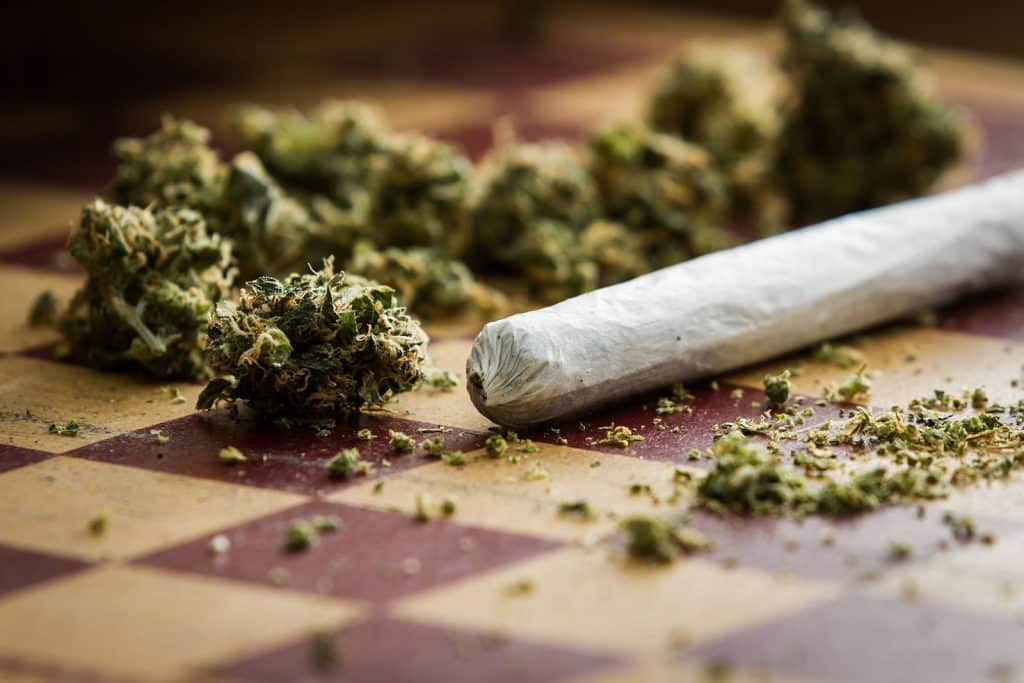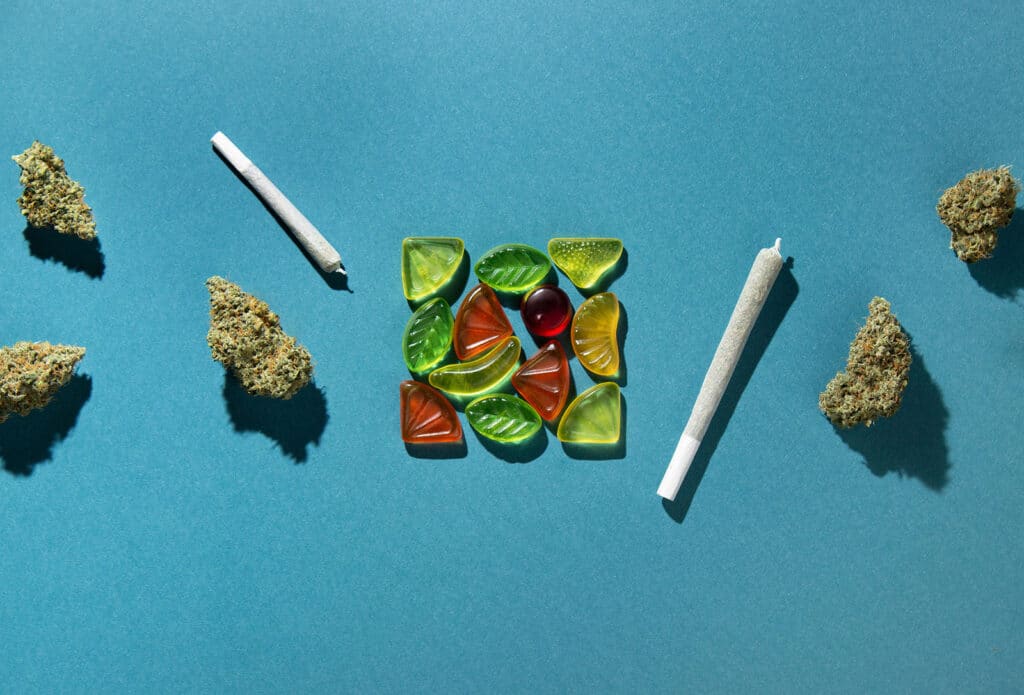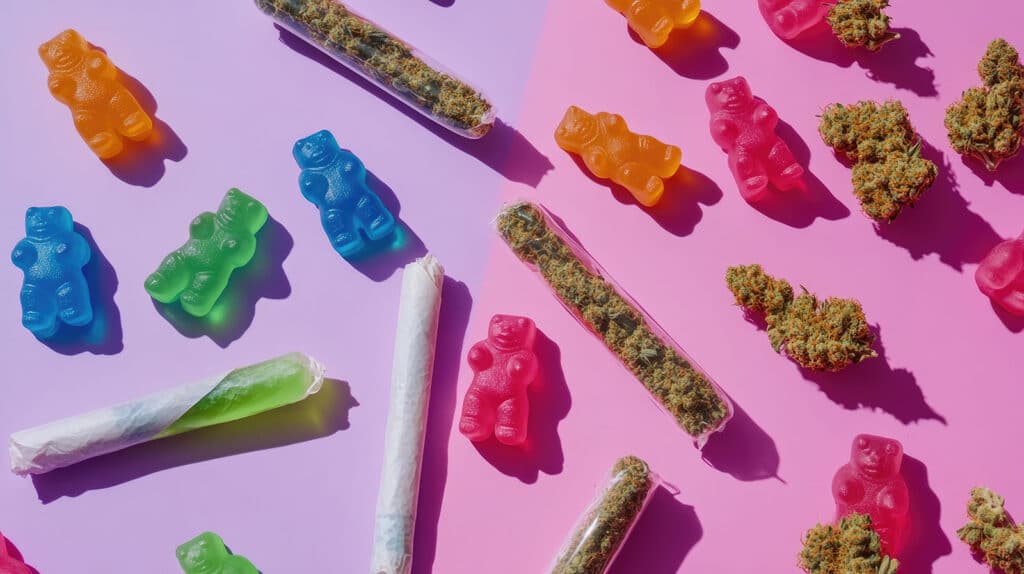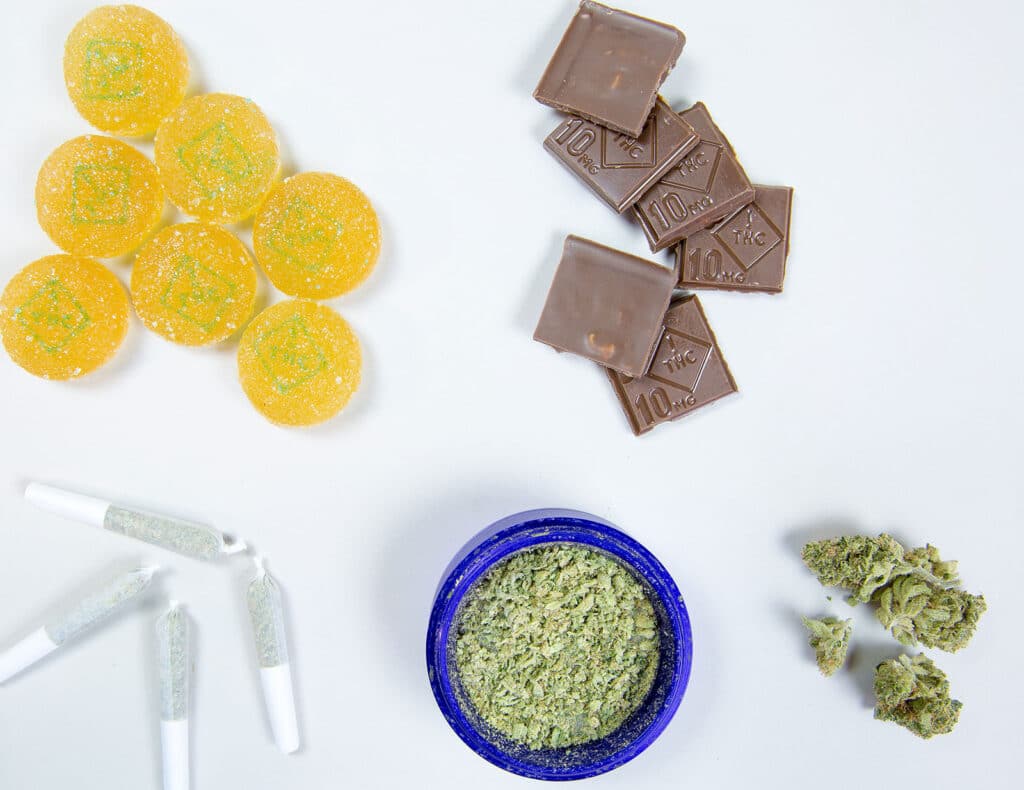The popularity of cannabis edibles has skyrocketed in recent years, with U.S. sales estimated to reach nearly $8.24 billion by 2025.
This usage is driven by a growing preference for edibles among consumers of all ages, especially those aged 35-54. But how else do edibles differ from traditional smoking methods, like joints and vaping?
Let’s explore the science behind both and learn the difference between a 10 mg edible vs a joint.
Table of Contents
How Does Cannabis Work?
Cannabis is the one thing that edibles and joints have in common – but how does this substance work?

Cannabis, or marijuana, is a plant containing hundreds of compounds known as cannabinoids. The cannabinoid you might have heard of is tetrahydrocannabinol (THC). It’s responsible for the psychoactive effects users typically experience when taking cannabis.
Another cannabinoid, cannabidiol (CBD), is also gaining popularity for its potential therapeutic benefits without the high.
When you consume cannabis, the cannabinoids are absorbed into your bloodstream and interact with the endocannabinoid system (ECS). This is a network of receptors found throughout your body. It plays a role in regulating various bodily functions, including mood, appetite, pain, and sleep.

10 mg Edible vs Joint: What’s the Difference?
Joints are smoked, which means the THC is inhaled and quickly absorbed into the bloodstream. THC edibles (i.e. gummies, candies, brownies…etc.), on the other hand, are ingested and must be processed by the digestive system before the THC is absorbed.
This section digs deeper into the primary differences between each method of cannabis consumption.
Consumption Method & Control of Dosage
When consuming edibles, you should always start with a low dose and wait at least an hour before consuming more. Doing so will give your body time to process the THC, and you can avoid overconsumption.
Make sure to also choose a reputable brand that provides accurate dosage information. Some edibles may contain more THC than advertised. So, start with a lower dose to avoid adverse effects.
When smoking cannabis, however, you can control the dosage by the size of the joint and the number of puffs taken. Still, it can be difficult to accurately measure the amount of THC you’re inhaling.
Potency
The potency of a 10 mg edible versus a joint can vary depending on several factors, including:
- THC content: The amount of THC in the cannabis product will significantly impact potency.
- Strain: Different strains of cannabis have varying levels of THC and other cannabinoids.
- Cultivation method: The way the cannabis is grown can affect its potency.
- Individual factors: Tolerance, metabolism, and other personal factors can influence how each user experiences the effects of cannabis.
Note: While a 10 mg edible may contain a similar amount of THC as a joint, the effects will be felt differently due to the slower absorption rate.
Time to Take Effect & Duration of Action
So why do edibles typically take longer to take effect than joints?
That’s because the digestive system needs to process an edible dose first before the THC is absorbed into the bloodstream. In other words, the edible won’t hit you until 30 minutes or 2 hours later.
Joints, on the other hand, produce effects within minutes.
The duration of action also differs between both. Edibles generally have a longer-lasting effect, with the cannabis high lasting several hours. Alternatively, joints produce a shorter-lasting high, typically lasting around 2 hours.
Side Effects of THC
Both THC gummies and joints can cause side effects, although the nature and severity of these effects can vary. Common side effects include:
- Dry mouth
- Red eyes
- Increased appetite
- Drowsiness
- Anxiety
- Paranoia
Edibles may be more likely to cause delayed side effects as well, such as nausea and vomiting, especially if the dose is too high.
Note: These side effects are generally mild and temporary. If you experience any severe or persistent side effects, however, it’s essential to seek a healthcare professional. Those can be uncontrollable nausea or rapid heart rate.
Legality
The legal status of cannabis varies significantly from state to state. In Iowa and Kansas, for example, both possession and use of cannabis are illegal. Other states like California and Illinois have decriminalized or legalized it for medical or recreational purposes.
The legality of cannabis is constantly evolving, though, so always be on the lookout for the specific laws in your jurisdiction before consuming cannabis.

10 mg Edible vs Joint: Which is Best?
The answer depends on a number of factors you should consider beforehand. Ask yourself the following questions to start and based on them, you’ll learn which method of consumption is more suitable for you.
- What’s the desired effect you’re going for? Are you looking for a long-lasting high or a quick-acting effect?
- What’s your tolerance level? How experienced are you with cannabis?
- Do you have any underlying medical or health conditions that might affect your choice?
Note: Whichever you decide on, it’s best to start with a low dosage and then gradually increase your intake.
Now, let’s get into the advantages and disadvantages of both edible cannabis and joints.
Edibles
Pros:
- Longer-lasting effects
- Discreet consumption
- Potential for therapeutic benefits
Cons:
- Delayed onset of effects
- Possibility of overconsumption
- Not suitable for those with digestive issues
Joints
Pros:
- Immediate onset of effects
- More control over dosage
- Less expensive than edibles
Cons:
- Potential for respiratory issues
- Less discreet consumption
- Not suitable for those with respiratory problems

10 mg Edible vs Joint: Are the Benefits the Same?
Despite the differences between gummies and joints, the potential benefits of both generally remain consistent. Here are some of the key benefits that are associated with cannabis use:
Pain Relief
A recent study published by NIH found that medical cannabis helped significantly reduce chronic pain symptoms in people with chronic illnesses and autoimmune disorders.
Appetite Stimulation
Cannabis is often used to stimulate appetite, particularly in individuals with conditions like AIDS or cancer. The cannabinoid THC is believed to play a role in increasing appetite and reducing nausea and vomiting.
Anxiety & Stress Reduction
Some research by NIH suggests that cannabis can help alleviate anxiety and stress. They found that cannabis may be effective in treating anxiety disorders, such as post-traumatic stress disorder (PTSD).
FAQs
How many edibles are equal to a joint?
How long does 10 mg edible hit?
Will 5 mg of edible get me high?
Is 5mg edible good for beginners?
Final Say
Both 10 mg edibles and joints offer unique experiences. Edibles provide a longer-lasting high and may be more discreet, while joints offer an immediate and intense high.
Either way, start with a low dose and monitor for side effects. Note what happens to your body when high, and be careful not to increase the dosage until you’re sure it won’t affect you negatively.
Published on: 2024-09-11
Updated on: 2025-04-29



